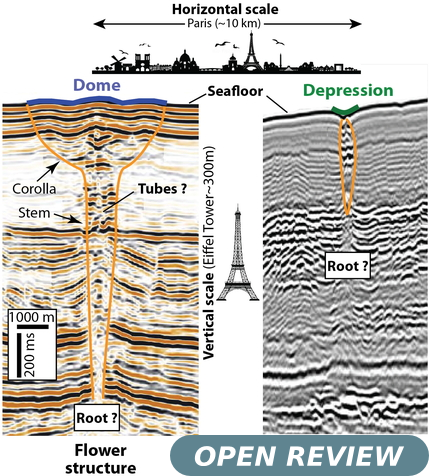Future challenges on focused fluid migration in sedimentary basins: Insight from field data, laboratory experiments and numerical simulations
DOI:
https://doi.org/10.4279/pip.140011Keywords:
Granular media , Fluid migration, Multiphase flowsAbstract
In a present context of sustainable energy and hazard mitigation, understanding fluid migration in sedimentary basins – large subsea provinces of fine saturated sands and clays – is a crucial challenge. Such migration leads to gas or liquid expulsion at the seafloor, which
may be the signature of deep hydrocarbon reservoirs, or precursors to violent subsea fluid releases. If the former may orient future exploitation, the latter represent strong hazards for anthropic activities such as offshore production, CO$_2$ storage, transoceanic telecom fibers or deep-sea mining. However, at present, the dynamics of fluid migration in sedimentary layers, in particular the upper 500 m, still remains unknown in spite of its strong influence on fluid distribution at the seafloor. Understanding the mechanisms controlling fluid migration and release requires the combination of accurate field data, laboratory experiments and numerical simulations. Each technique shall lead to the understanding of the fluid structures, the mechanisms at stake, and deep insights into fundamental processes ranging from the grain scale to the kilometers-long natural pipes in the sedimentary layers.
Here we review the present available techniques, advances and challenges still open for the geosciences, physics, and computer science communities.

Downloads
Published
How to Cite
Issue
Section
License
Copyright (c) 2022 Valérie Vidal, Aurélien Gay

This work is licensed under a Creative Commons Attribution 4.0 International License.
Authors agree to the PIP Copyleft Notice













